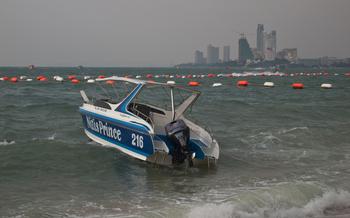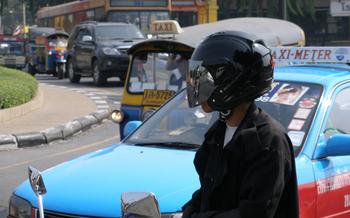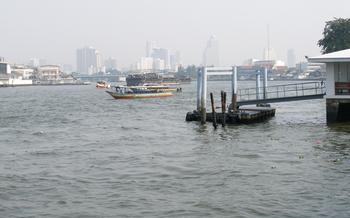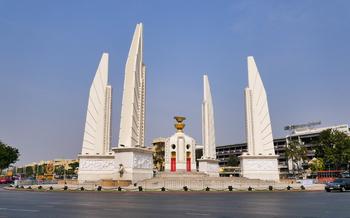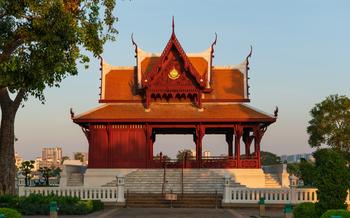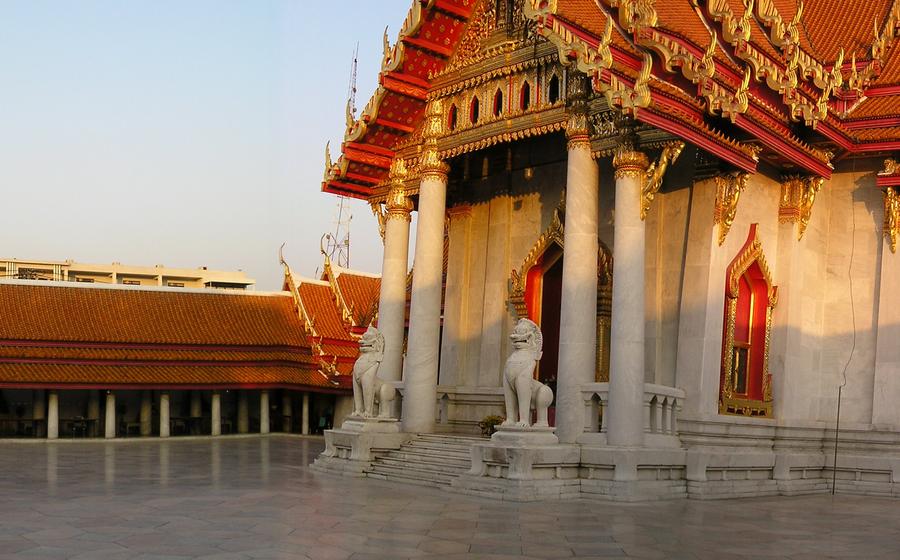
Wat Benchamabophit (Marble Temple)
- History and Significance
- Architecture and Design
- Worship and Rituals
- Exploring the Serene Grounds
- Ubosot (Ordination Hall)
- Marble Chedi: A Symbol of Serenity and Grace
- Phra Ubosot (Main Buddha Image)
- Photography and Etiquette
- Dress Code and Attire
- Meditation and Spiritual Retreats
- Festivals and Celebrations
- Transportation and Accessibility:
- Nearby Attractions: Creating a Fulfilling Itinerary
- Insider Tip: Secret Spot for Serenity
History and Significance
Wat Benchamabophit, also known as the Marble Temple, holds a prominent place in Bangkok's religious and cultural landscape. Built in the late 19th century during the reign of King Chulalongkorn (Rama V), the temple showcases a unique blend of Thai and Western architectural influences, reflecting the king's vision of modernizing Siam while preserving its Buddhist heritage.
The temple's construction was overseen by Prince Narisara Nuwattiwong, who traveled to Italy to study architecture and brought back Italian craftsmen to assist in the temple's construction. This collaboration resulted in a remarkable fusion of artistic styles, with Italian marble facades and intricate carvings harmoniously integrated into traditional Thai temple architecture.
Wat Benchamabophit's significance extends beyond its architectural beauty. It is a royal temple, closely associated with the Thai monarchy and often used for royal ceremonies and events. The temple's history is intertwined with the country's modernization efforts, symbolizing the blending of traditional values with the embrace of Western influences that characterized the era.
Architecture and Design
Wat Benchamabophit stands as a testament to the fusion of traditional Thai craftsmanship with Western architectural influences. The temple's most striking feature is its intricate Italian marble facade, a unique element that sets it apart from other Thai temples. The facade is adorned with delicate carvings depicting scenes from Buddhist mythology, showcasing the exceptional artistry and attention to detail that went into its creation.
The temple's spires, known as prang, are another distinctive architectural feature. These towering structures, adorned with intricate ceramic tiles and crowned with golden stupas, create a majestic skyline that can be seen from afar. The prang symbolize the sacred Mount Meru, the mythical abode of the gods in Buddhist cosmology.
The interior of the temple is equally impressive, with its elegant and spacious design. The main sanctuary, or ubosot, features a grand entrance flanked by massive pillars. The walls are adorned with intricate murals depicting scenes from the life of Buddha, creating a serene and contemplative atmosphere. The central ordination hall, with its high vaulted ceiling, exudes a sense of grandeur and spirituality.
The temple grounds are meticulously landscaped, with serene gardens, tranquil ponds, and various Buddha images scattered throughout. The lush greenery and serene water features create a harmonious balance with the temple's architectural grandeur, inviting visitors to wander and explore the complex at leisure.
Worship and Rituals
Wat Benchamabophit is not merely an architectural marvel but also a living place of worship that holds deep religious significance for Thai people. Daily ceremonies and rituals are meticulously observed, creating a sacred atmosphere that draws both devotees and visitors alike.
In the early hours of the morning, monks clad in saffron robes gather in the ubosot, the central ordination hall, to chant mantras and offer prayers. The melodious sound of their voices reverberates through the serene surroundings, creating a sense of tranquility and devotion.
Throughout the day, the temple welcomes a steady stream of devotees who come to make offerings and seek blessings. They kneel before the Buddha images, their hands clasped in prayer, and present flowers, incense sticks, and other symbolic offerings. Some light candles, symbolizing the dispelling of darkness and the illumination of wisdom.
The monks play a crucial role in maintaining the sanctity of the temple. They are responsible for leading religious ceremonies, teaching Dharma (Buddhist teachings), and providing guidance to devotees. Their presence adds a profound spiritual dimension to the temple, making it a place where people can come to connect with their faith and seek inner peace.
Whether you are a devout Buddhist or simply curious about Thai culture, witnessing the religious ceremonies and rituals at Wat Benchamabophit is a truly enriching experience. It offers a glimpse into the deep spirituality that permeates Thai society and provides a deeper understanding of the role that Buddhism plays in the lives of the people.
Exploring the Serene Grounds
As you step into the temple complex, you'll be greeted by lush gardens adorned with vibrant flowers and neatly trimmed lawns. The serene atmosphere invites you to wander through the peaceful surroundings, taking in the beauty of nature and the tranquility that envelops the temple grounds. Tranquil ponds reflect the intricate temple structures, creating a picturesque scene that will capture your heart.
Amidst the serene gardens, you'll discover various Buddha images, each with unique expressions and postures. These sacred statues represent different aspects of Buddha's teachings and serve as objects of reverence for devotees. Take your time to explore these serene corners of the temple, offering a moment of contemplation and reflection.
Ubosot (Ordination Hall)
The heart of Wat Benchamabophit lies within its majestic Ubosot, or Ordination Hall. This grand structure serves as a sacred space for Buddhist ceremonies, including ordinations, chanting sessions, and meditation retreats. Approaching the Ubosot, visitors are greeted by an imposing entrance adorned with intricate carvings depicting mythological creatures and celestial beings.
Once inside, the Ubosot's interior captivates with its serene atmosphere and exquisite murals. The walls are adorned with vibrant paintings that narrate significant events from the life of Buddha, from his birth to his enlightenment and ultimate Nirvana. These murals are a testament to the artistic prowess of Thai craftsmen and offer a glimpse into the rich mythology and teachings of Buddhism.
The centerpiece of the Ubosot is the grand Buddha image enshrined within. This revered statue exudes an aura of peace and tranquility, inviting visitors to pause and reflect upon the teachings of the Buddha. The image is adorned with intricate gold leaf and precious stones, symbolizing the profound respect and devotion held by the Thai people.
Marble Chedi: A Symbol of Serenity and Grace
The Marble Chedi stands as a majestic centerpiece within the temple complex, captivating visitors with its towering height and intricate carvings. Constructed entirely of Carrara marble imported from Italy, this magnificent structure embodies elegance and serenity. Symbolizing the Buddha's attainment of nirvana, the chedi represents the ultimate goal of Buddhist teachings.
As visitors approach the chedi, they are greeted by a series of bas-relief carvings that adorn its surface. These intricate depictions showcase scenes from the life of Buddha, narrating his journey from birth to enlightenment. The carvings are a testament to the exceptional craftsmanship of the temple's artisans, who meticulously chiseled each detail into the marble.
The chedi's graceful silhouette dominates the temple grounds, creating a harmonious balance with the surrounding architecture. Its pristine white exterior reflects the sunlight, casting a soft glow that illuminates the entire complex. As visitors circumambulate the chedi, they are immersed in a sense of tranquility, inspired by the sacredness of the site.
The Marble Chedi serves as a reminder of the impermanence of all things. Just as the marble itself has weathered over time, so too do our worldly possessions and attachments. The chedi invites visitors to let go of material desires and embrace the pursuit of spiritual enlightenment, following in the footsteps of the Buddha himself.
Phra Ubosot (Main Buddha Image)
The heart of Wat Benchamabophit lies within the ubosot, the main ordination hall, where the sacred Phra Ubosot, the principal Buddha image, resides. This revered image, crafted from pure white jade, exudes an aura of serenity and compassion, captivating the hearts of devotees and visitors alike. Its origins can be traced back to the reign of King Chulalongkorn, who commissioned the creation of this masterpiece to serve as the focal point of the temple.
The Phra Ubosot is enshrined upon a grand pedestal, adorned with intricate carvings and glistening mother-of-pearl inlays. Devotees often gather before the image, offering prayers, lighting incense, and making merit by placing gold leaf upon its surface. The unwavering devotion to this sacred icon is palpable, as worshippers seek solace, guidance, and blessings from the benevolent presence of the Buddha.
Whether you are a devout Buddhist or simply an admirer of exquisite craftsmanship, the Phra Ubosot is a must-see attraction within Wat Benchamabophit. Its serene countenance and spiritual significance will undoubtedly leave a lasting impression, inviting you to contemplate the profound teachings of the Buddha and experience the tranquility that emanates from this sacred space.
Photography and Etiquette
Photography is permitted within the temple grounds, allowing visitors to capture the stunning architecture and serene atmosphere. However, it is essential to be mindful and respectful when taking photos. Silence and unobtrusive behavior are paramount to maintain the sacredness of the temple and avoid disturbing worshippers or monks engaged in religious ceremonies.
- Photography Tips:
- Opt for a wide-angle lens or step back to capture the temple's grandeur fully.
- Use natural light to your advantage, avoiding flash photography, which can be disruptive and disrespectful.
-
Be mindful of the people around you and avoid capturing them in your photos without their consent.
-
Etiquette Guidelines:
- Refrain from talking loudly or engaging in boisterous behavior that may disturb the tranquility of the temple.
- Remove your shoes before entering the ubosot or any other sacred building within the complex.
- Avoid pointing your feet or soles towards Buddha images, as it is considered disrespectful in Thai culture.
- Dress modestly and appropriately, covering your shoulders and knees, as a sign of respect for the temple's sacred nature.
Dress Code and Attire
When visiting Wat Benchamabophit, it is essential to dress respectfully, adhering to local customs and religious etiquette. Visitors should avoid wearing shorts, tank tops, or revealing clothing that might be considered inappropriate in a sacred space. Instead, opt for modest attire that covers your shoulders and knees. Long pants, skirts, or dresses are suitable choices for both men and women.
It is also customary to remove your shoes before entering the temple's inner sanctum, where the Buddha image is enshrined. Look for designated shoe racks or shelves near the entrance where you can leave your footwear. Remember to handle your shoes with care and avoid pointing the soles towards the Buddha image, as this is considered disrespectful.
By dressing appropriately and observing these simple guidelines, you can show your respect for the temple's sanctity and contribute to a harmonious and reverent atmosphere for all visitors.
Meditation and Spiritual Retreats
Wat Benchamabophit offers a unique opportunity for visitors to delve deeper into their spiritual journey through meditation and spiritual retreats. The temple's serene atmosphere and tranquil surroundings provide an ideal setting for introspection and self-reflection. Visitors can join daily meditation sessions led by experienced monks, who guide participants through various meditation techniques and teachings. These sessions are open to people of all faiths and backgrounds and offer a profound opportunity to connect with one's inner self and cultivate inner peace.
For those seeking a more immersive experience, Wat Benchamabophit also organizes spiritual retreats that span several days or weeks. These retreats typically include intensive meditation practices, teachings on Buddhist philosophy, and guided spiritual practices. Participants have the chance to immerse themselves completely in the temple's sacred environment and receive personalized guidance from the resident monks. Whether you're a seasoned meditator or a beginner looking to explore the depths of your spirituality, Wat Benchamabophit provides a transformative space to embark on a journey of self-discovery and spiritual growth.
Festivals and Celebrations
Wat Benchamabophit comes alive during various festivals and celebrations throughout the year, attracting both local devotees and international visitors. One of the most significant events is Loi Krathong, held annually in November. During this festival, people gather at the temple to release beautifully decorated krathongs (floating baskets) into the surrounding canals, symbolizing the letting go of negativity and bad luck.
Another important festival is Makha Bucha, observed in February or March, which commemorates the day when 1,250 enlightened disciples gathered spontaneously to listen to Buddha's teachings. During this time, the temple hosts special ceremonies and chanting sessions, creating a truly spiritual atmosphere.
Lastly, Visakha Bucha, the most sacred day in the Buddhist calendar, is celebrated in April or May and marks the birth, enlightenment, and passing of Buddha. The temple is adorned with colorful decorations, and special prayers and rituals are conducted to honor this auspicious occasion.
Participating in these festivals and celebrations at Wat Benchamabophit offers a unique opportunity to immerse oneself in Thai culture, witness the vibrant traditions, and share in the spiritual joy of the local community.
Transportation and Accessibility:
Wat Benchamabophit is conveniently located in the Dusit district of Bangkok, making it easily accessible by various transportation options. The most convenient way to reach the temple is by taking the BTS Skytrain to National Stadium Station. From there, visitors can either take a short walk or catch a taxi to the temple, which is just a few minutes away. Alternatively, visitors can take a taxi or tuk-tuk directly from their hotel or other parts of the city. The journey by taxi usually takes around 30 minutes, depending on traffic conditions. For those who prefer a more leisurely mode of transport, a boat ride along the Chao Phraya River is a scenic option. Visitors can take a ferry or express boat from various piers along the river and disembark at the Phan Fa Lilat Pier, which is a short walk from the temple.
Nearby Attractions: Creating a Fulfilling Itinerary
Wat Benchamabophit's prime location in Bangkok makes it an ideal starting point for exploring other nearby attractions. Just a short walk away, visitors can immerse themselves in the vibrant atmosphere of the Pak Khlong Talat flower market, a bustling hub of colors and fragrances. Here, you can witness the locals' devotion to floral offerings and purchase beautiful flowers to adorn your home or pay homage at the temple.
For a taste of history and culture, head to the National Museum Bangkok, a short drive from Wat Benchamabophit. This grand institution houses an impressive collection of Thai artifacts, providing a glimpse into the country's rich past. Marvel at ancient sculptures, intricate gold ornaments, and traditional costumes that tell the story of Thailand's diverse heritage.
Art enthusiasts should make their way to the Bangkok Art and Culture Centre, a contemporary art space showcasing both local and international exhibitions. Immerse yourself in the vibrant works of talented Thai artists, from paintings and sculptures to photography and installations. The center also hosts workshops, performances, and film screenings, offering a dynamic and interactive experience.
To escape the hustle and bustle of the city, take a leisurely stroll along the banks of the Chao Phraya River, just a short walk from Wat Benchamabophit. Admire the stunning views of the Grand Palace and Wat Pho, and hop on a ferry to explore other iconic landmarks such as Wat Arun, the Temple of Dawn. The riverfront is also dotted with charming cafes and restaurants, offering a relaxing spot to unwind and soak in the tranquil atmosphere.
Insider Tip: Secret Spot for Serenity
Amidst the grandeur of Wat Benchamabophit, there lies a hidden gem known only to locals and seasoned travelers. Tucked away behind the main shrine, visitors can discover a secluded garden oasis, where tranquility reigns supreme. Surrounded by lush greenery, a small pond reflects the shimmering sunlight, creating a picturesque scene that invites contemplation and inner peace. This serene spot is ideal for escaping the bustling crowds and finding a moment of respite within the sacred grounds of the temple. Whether you seek solace, inspiration, or a chance to connect with your spiritual self, this hidden sanctuary awaits those who venture beyond the beaten path.

